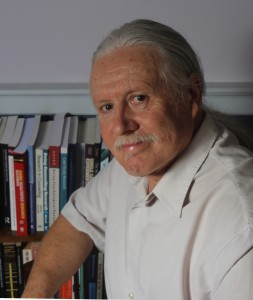Week 5 of the bereavement training module went well. The students were made aware of some more models and theories of grief: Stroebe and Schut’s Dual Process Model, the Work of Martin and Doka on Instrument and Intuitive Grief and of the pitfalls of gender stereotyping grieving styles. We also explored the work of Linda Machin: her Range of Responses to Loss model. Finally we looked at the concept of Continuing Bonds with the deceased. In the afternoon we practised counselling skills.
Then last week I spent a morning teaching basic theories of grief to a very interested and interesting group of medical students, here at the Hospice learning about hospice work and palliative care.
Next Tuesday, 29th October, my good friend and colleague Golnar Bayat is delivering the morning module session on Working with Difference. Golnar helped me write my book chapter with this title.
On the 5th November I am training hospice volunteers on the workshop title “What to do, what to say”. People are often worried about what to say to distressed people when we know that we cannot change the situation they are in. It is however, important to be there for people, to listen attentively and be a caring presence. Volunteers often need training to give them confidence, and a reassurance that usually, just ‘being there’ is enough.
References
Abraham, K. (1949). Selected Papers of Karl Abraham (T. Douglas Bryan and Alix Strachey Ed.). London: Hogarth Press and the Institute of Psycho-Analysis. (Original work published 1924).
Bowlby, J. (1969). Attachment and Loss: Volume 1 Attachment. London: Pimlico.
Freud, S. (1957). Mourning and melancholia (J. Strachey Ed. Vol. 14). London: Hogarth.
Klass, D., Silverman, P. R., & Nickman, S. L. (1996). Continuing Bonds: New Understandings of Grief. Philadelphia: Taylor & Francis.
Machin, L. (2009). Working with Loss and Grief: A New Model for Practitioners. London: Sage.
Martin, T. L., & Doka, K. J. (2000). Men don’t cry…women do: Transcending gender stereotypes of grief. Phildelphia: Taylor and Francis.
Rando, T. A. (1993). Treatment of complicated mourning. Champaign IL: Research Press.
Stroebe, M. S. (2011). The Dual Process Model: latest thinking. Paper presented at the Colin Murray Parkes Open Meetings. St Christopher’s Hospice London 16th February 2011, St Christopher’s Hospice,London.
Stroebe, M. S., Stroebe, W., Schut, H., Zech, E., & van den Bout, J. (2002). Does disclosure of emotions facilitate recovery from bereavement? Evidence from two prospective studies. Journal of Consulting and Clinical Psychology, 70(1), 169-178.
Stroebe, M.S. & Schut, H. (2001) Models of coping with bereavement, a review, in M.S. Stroebe, W. Stroebe & R.O. Hansson (Eds) Handbook of Bereavement, Cambridge: Cambridge University Press
Wikan, U. (1990). Managing turbulent hearts:a Balinese formula for living. London & Chicago: University of Chicago Press.
Worden, J. W. (2002). Grief Counselling and Grief Therapy (3rd ed.). New York: Springer.
